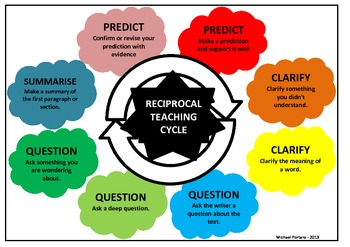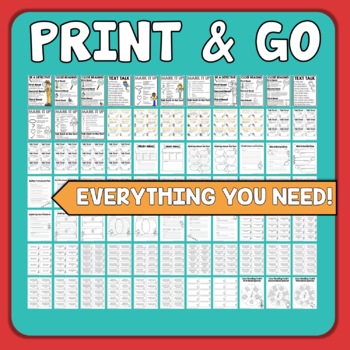12 Teaching Strategies
for English
In addition to general
teaching strategies, any English teacher will also need to have strategies
aimed specifically at teaching English. With a variety of learning ability
levels and unique needs these are a few methods to ensure everyone masters the
content.
2: Peer Response and Editing: Peer
Response and Editing allows students to think critically about each other’s
work. It also allows students to see how their classmates tackled the same
writing assignment, which may get the students to come up with new approaches
they might not have thought of without the peer-editing step ("Five
Strategies for Effective English Teachers", 2012). Peer editing is
beneficial to students for numerous reasons. Those reasons include that writers
need a wide variety of feedback and there are always enough peers in a class to
give that wide variety of feedback. Additionally, peer editing helps students accept
constructive criticism and gives them deeper insight into their own writing
process (News, 2015).
3: Student-Chosen Texts: When students
are given a wide variety of choices of age-appropriate literature they are more
likely to remain engaged and become life-long readers. After some time spent
reading independently the students might break into groups and discuss what
they read. This is usually followed by independent journaling. When this
strategy is done well it can result in students understanding the material they
read on a much deeper level, which in turn can lead to productive discussions
with their classmates ("Five Strategies for Effective English
Teachers", 2012). Allowing students to chose texts is beneficial on
several levels. In addition to increased engagement, student choice is linked
to scholastic achievement. It will also cause students to read more, improve
their writing skills, and give the instructor a better idea which narratives
will be interesting to their students ("How to Motivate Students by
Letting Them Choose Books", 2019).
5: Annotating and Paraphrasing Sources: Annotating
and paraphrasing requires students to underline key words, write margin notes,
and summarize main ideas as they read a primary or secondary source ("Annotating
and Paraphrasing Sources", 2019). Careful annotations will improve both
reading comprehension and writing skills. It also gives cues into the authors
tone, the narratives mood, and the author’s perspective and potential bias.
When done with purpose, annotations keep track of main ideas, prompt thought
provoking questions, and help the reader make inferences as well as draw conclusions
about the text (Lynch, 2019).
6: Character Maps/ Plot Diagrams:
Character Maps are graphic organizers that use a simple drawing of a person,
with questions connected to the characters physical, mental, emotional, and
social traits. Character maps can be used with historical or fictional
characters ("Character Maps", 2019). Meanwhile, plot diagrams serve
to map out the exposition, conflict, rising action, climax, resolution, and
falling action of a narrative. Plot diagrams help students pick out major
elements of a narrative. They also help the reader understand how dynamic
characters change over time. In addition to honing the student’s analytic
skills, filling one out also meets several Common Core standards related to
literacy (Clever Prototypes, 2019).
 7: Reciprocal Teaching: Within this
strategy, teachers challenge students to interact more with the text they are
reading. The students are taught strategies like predicting, questioning,
making inferences, clarifying, or summarizing before they begin to read. The
students practice these skills in groups, as they move towards being
comfortable using them on their own. Done well this strategy can boost reading
comprehension, engage readers, improve literacy, and help students work more
effectively in groups. It also sets a secondary purpose for reading, which
gives the students a well-defined direction as they start to read (Juraschka,
2019).
7: Reciprocal Teaching: Within this
strategy, teachers challenge students to interact more with the text they are
reading. The students are taught strategies like predicting, questioning,
making inferences, clarifying, or summarizing before they begin to read. The
students practice these skills in groups, as they move towards being
comfortable using them on their own. Done well this strategy can boost reading
comprehension, engage readers, improve literacy, and help students work more
effectively in groups. It also sets a secondary purpose for reading, which
gives the students a well-defined direction as they start to read (Juraschka,
2019).
8: Making Text Connections: Text
connections are about making reading more meaningful. They usually come in
three forms: text-to-text connections, text-to-world connections, and
text-to-self connections. Making these connections as they read also gives
students a purpose for reading. And, when students have set a purpose they will
be more likely to comprehend the meaning of the text ("Text-to-Text,
Text-to-Self, Text-to-World", 2019). Using this strategy helps readers
understand a characters motivations. It also keeps readers involved, thus
alleviating boredom. Moreover, when using strategies like text-to-text and
text-to-world students see the narrative through parallel structure or through
the eyes of others who read it before them (Glass & Zygouris-Coe, 2004)
9: Word Walls: A word wall creates a
space in a classroom where relevant vocabulary is prominently displayed. To be
effective word walls should be placed where all students can see them. Teachers
and students should decide together which words will go on the world wall. New information
should be added to the word wall on a regular basis. And the instructor should
refer back to the word wall in his or her instruction. Word walls are helpful
because they help students identify patterns between the words and their
spellings. Additionally, students are able to use them as a reference when
engaged in any reading or writing activity ("Word Walls | Classroom
Strategy | Reading Rockets", 2019).
 10. Close Reading: Close Reading
Protocol asks students to reread smaller portions of the text. During a close
read the students may focus on the author’s purpose, the text structure, or
what specific words mean in context. Close reads are important as they help
students identify text evidence to back up their own claims. Additionally, the
attention to the small details of the text ensure that students truly
comprehend what they are reading ("Close Reading Protocol", 2019).
Using this process students focus on what the text says, how the text says it,
and what the underlying meaning is. Close reading is beneficial as it addresses
some concerns of Common Core, develops critical thinking, and can be used in a
cross-curricular way (Khan, 2019).
10. Close Reading: Close Reading
Protocol asks students to reread smaller portions of the text. During a close
read the students may focus on the author’s purpose, the text structure, or
what specific words mean in context. Close reads are important as they help
students identify text evidence to back up their own claims. Additionally, the
attention to the small details of the text ensure that students truly
comprehend what they are reading ("Close Reading Protocol", 2019).
Using this process students focus on what the text says, how the text says it,
and what the underlying meaning is. Close reading is beneficial as it addresses
some concerns of Common Core, develops critical thinking, and can be used in a
cross-curricular way (Khan, 2019).
11: Genre Immersion: Genre Immersion
gives the students a few weeks to look at narratives that fall within the same
genre. There are numerous benefits to staying on the same genre for a few weeks.
First and foremost, that’s the way most ELA texts are set up. Units tend to
focus on several stories with similar structure. There may be one unit on
fables, followed by a unit on realistic fiction, followed by a unit on
expository text (Mansaray, 2013). Immersion exposes students to high-quality
examples of a specific genre. In doing so, students internalize the language,
structure, form, purpose, and possibilities of each genre. This is critical
before expecting students to write within that genre.
12: Word Analysis: Using this skill
students break words down into morphemes, their smallest units of meaning. Each
morpheme has a meaning that contributes to the whole word. This helps students
build up to the word, even if they have never been exposed to the word they are
looking at before. Because much of English is borrowed, there are many words in
the lexicon, that it’s critical to understand the prefixes, suffixes, roots,
and word origin to keep up. Though word analysis can be tedious, it can
certainly help students keep up ("Word Analysis | Power Up What
Works", 2019). Word analysis is a foundational reading skill, it is
critical for students who are developing their vocabulary, and it also
satisfies several literacy-related Common Core Standards (Zorfass, 2019).
* The resource list for both teaching strategies pages can be found HERE.
No comments:
Post a Comment